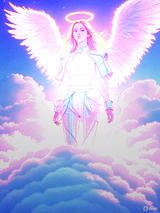Search Results
!/T2Ij.GdEA/x/40782170#40782202
7/23/2025, 7:19:45 PM
!/T2Ij.GdEA/x/40782023#40782034
7/23/2025, 6:55:26 PM
Psalms: Many psalms speak of God as light, or that by His light, we see light (e.g., Psalm 36:10).
Torah as Light: The Torah itself is described as light, representing divine wisdom and guidance.
3. The Emergence of Kabbalah and the "Ein Sof"
As Jewish philosophical and mystical thought deepened, particularly in the medieval period (12th-13th centuries onwards) with the rise of Kabbalah, there was a profound need to reconcile two seemingly contradictory aspects of God:
God as Transcendent and Infinite: Beyond all comprehension, attributes, or even names.
God as Immanent and Active in Creation: The God who interacts with the world and is revealed through His attributes and actions.
This is where the concept of Ein Sof (אֵין סוֹף - "Infinite" or "Without End") emerged.
It was primarily articulated by early Kabbalists like Azriel of Gerona (c. 1160 – c. 1238). The Ein Sof represents God in His absolute, undifferentiated, and unknowable essence, prior to any self-manifestation or emanation into the created worlds. It is beyond all attributes, thoughts, or even names.
The "story" here is less a narrative and more a theological necessity. How can an infinite God create a finite world without being limited by it? The Ein Sof is the answer – the aspect of God that remains entirely boundless even as creation unfolds.
4. "Aur Elyon" as the Light of Ein Sof
Within this Kabbalistic framework, "Aur Elyon" or "Ohr Ein Sof" (Light of the Infinite) becomes the primary way to conceptualize the Ein Sof's creative power and initial self-revelation.
The Problem of Creation (Tzimtzum): If the Ein Sof is truly infinite and fills all reality, how could there be "space" for anything else, let alone a finite world? The Kabbalistic answer, particularly developed by Isaac Luria (16th century), is Tzimtzum (צמצום - "contraction" or "withdrawal").
Torah as Light: The Torah itself is described as light, representing divine wisdom and guidance.
3. The Emergence of Kabbalah and the "Ein Sof"
As Jewish philosophical and mystical thought deepened, particularly in the medieval period (12th-13th centuries onwards) with the rise of Kabbalah, there was a profound need to reconcile two seemingly contradictory aspects of God:
God as Transcendent and Infinite: Beyond all comprehension, attributes, or even names.
God as Immanent and Active in Creation: The God who interacts with the world and is revealed through His attributes and actions.
This is where the concept of Ein Sof (אֵין סוֹף - "Infinite" or "Without End") emerged.
It was primarily articulated by early Kabbalists like Azriel of Gerona (c. 1160 – c. 1238). The Ein Sof represents God in His absolute, undifferentiated, and unknowable essence, prior to any self-manifestation or emanation into the created worlds. It is beyond all attributes, thoughts, or even names.
The "story" here is less a narrative and more a theological necessity. How can an infinite God create a finite world without being limited by it? The Ein Sof is the answer – the aspect of God that remains entirely boundless even as creation unfolds.
4. "Aur Elyon" as the Light of Ein Sof
Within this Kabbalistic framework, "Aur Elyon" or "Ohr Ein Sof" (Light of the Infinite) becomes the primary way to conceptualize the Ein Sof's creative power and initial self-revelation.
The Problem of Creation (Tzimtzum): If the Ein Sof is truly infinite and fills all reality, how could there be "space" for anything else, let alone a finite world? The Kabbalistic answer, particularly developed by Isaac Luria (16th century), is Tzimtzum (צמצום - "contraction" or "withdrawal").
Page 1
